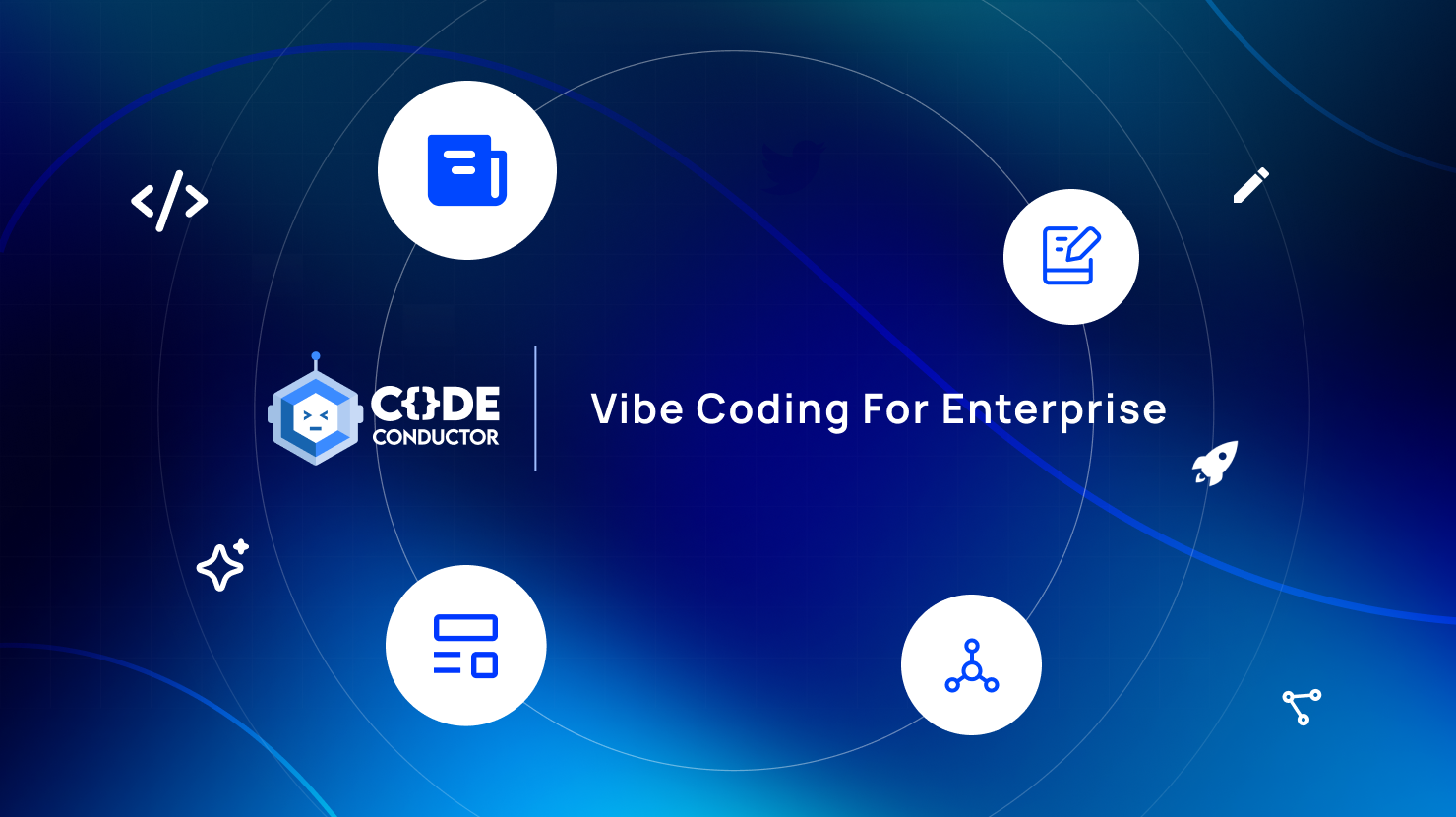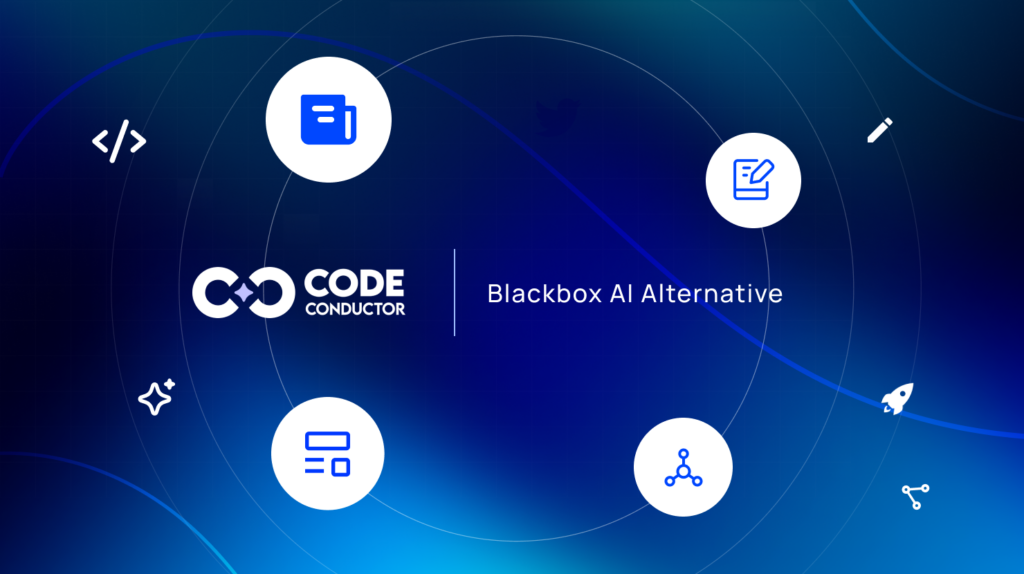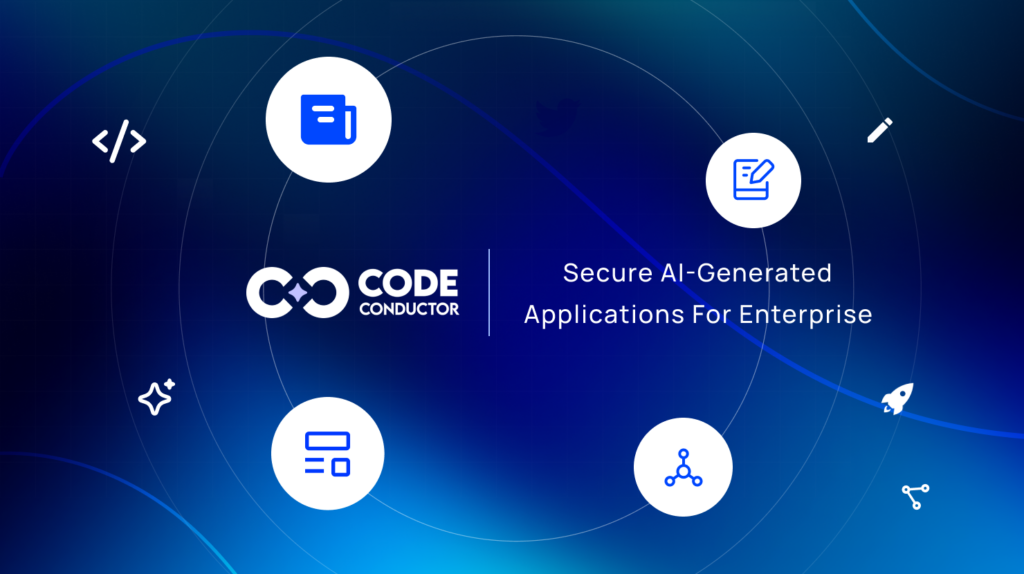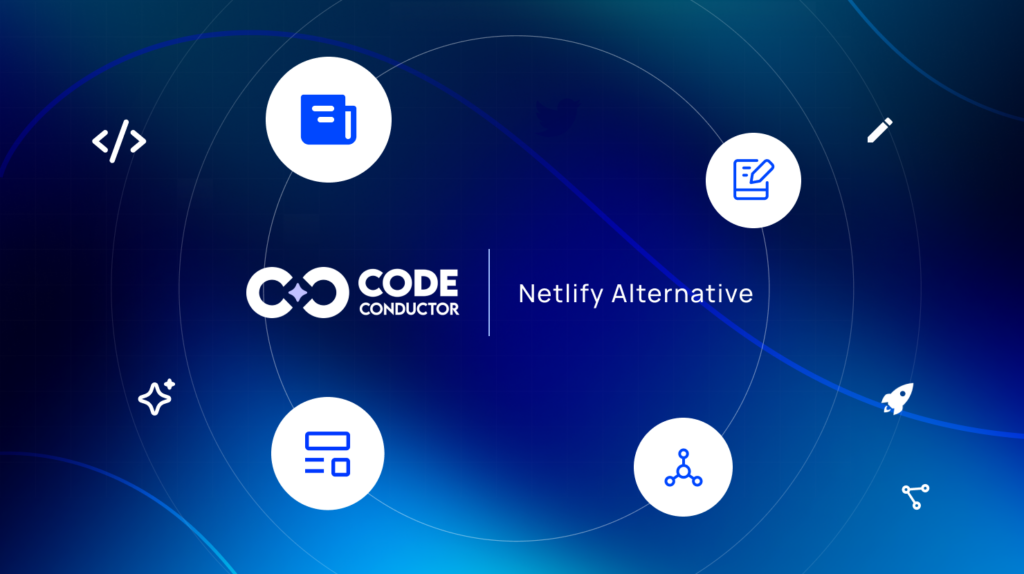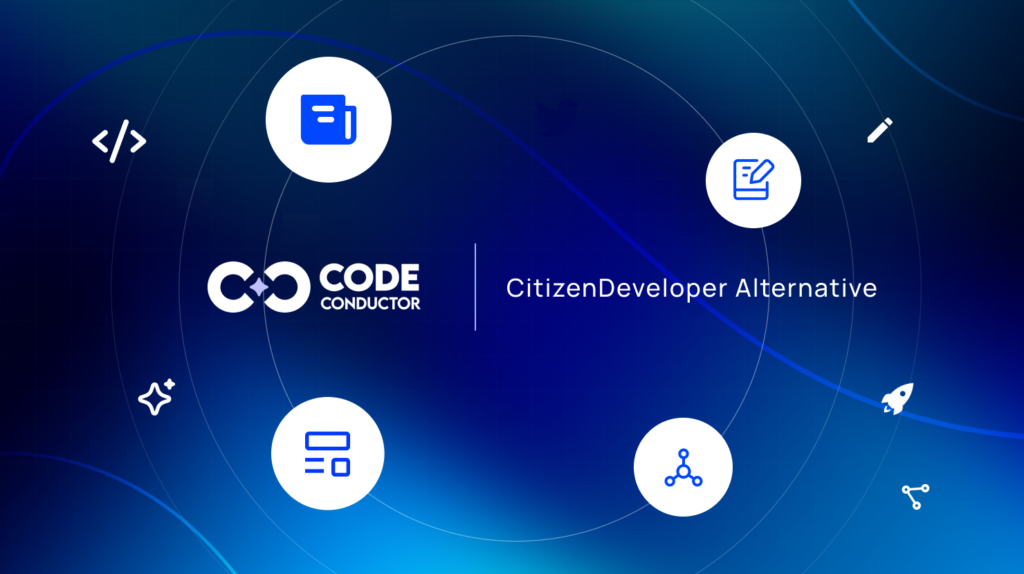Enterprise software development is undergoing a radical shift. Traditional models built around rigid specifications, linear delivery cycles, and heavy governance are being disrupted by a new, more fluid approach—vibe coding. Born from the synergy of developer intuition and AI-powered tooling, vibe coding emphasizes momentum, rapid iteration, and creative flow over exhaustive planning.
At the core of this movement is generative AI, enabling engineers to produce, modify, and deploy code faster than ever. Tools like GitHub Copilot and CodeConductor.ai are reshaping the way teams think about code ownership, experimentation, and velocity. For enterprises accustomed to tightly controlled pipelines, this can be both a tantalizing opportunity and a formidable challenge.
This blog explores how vibe coding can unlock innovation within enterprise environments, while addressing the critical need for compliance, control, and production safety. We’ll cover what vibe coding is, why it matters, where it fits, and how organizations can adopt it without compromising on their standards.
In This Post
- What Is Vibe Coding?
- Why Vibe Coding and Generative AI Matter for Enterprises
- The Challenges of Vibe Coding in Enterprise Environments
- Best Practices and Recommendations: When to Use Vibe Coding (and When Not To)
- Is Vibe Coding Secure Enough for Enterprise Applications
- How CodeConductor.ai Makes Vibe Coding Work?
- Conclusion: So, Is Vibe Coding Enterprise-Ready
What Is Vibe Coding?
Vibe coding is a style of software development that emphasizes speed, creativity, and intuition. Instead of starting with rigid specifications and formal documentation, developers dive straight into building, guided by instinct, feedback loops, and real-time collaboration. This approach is fueled by AI-driven tools that streamline coding tasks, reduce cognitive load, and spark ideation.
Unlike traditional development, vibe coding thrives in low-friction environments where experimentation is encouraged and iteration is fast. Think of a developer spinning up a tool, testing an idea, or solving a problem in real time, often within hours instead of weeks. The “vibe” comes from being in a creative flow state—where the code almost writes itself.
Generative AI platforms play a central role in enabling this. With tools like CodeConductor.ai and GitHub Copilot, developers can generate boilerplate code, translate ideas into working prototypes, and even refactor or debug logic through conversational interfaces. This accelerates development while allowing more room for human creativity and strategic thinking.
At its core, vibe coding is not a rejection of discipline. Instead, it is a reimagining of how coding can happen when constraints are balanced with trust, autonomy, and intelligent automation.
Why Vibe Coding and Generative AI Matter for Enterprises
Enterprises are under constant pressure to innovate more quickly, deliver digital solutions more efficiently, and remain competitive in rapidly evolving markets. Traditional software development processes, while reliable, often struggle to keep pace with these demands. Vibe coding, empowered by generative AI, offers a compelling alternative.
By reducing friction in the development process, Vibe coding enables engineers to transition from idea to execution in a fraction of the time. AI-assisted code generation, instant debugging suggestions, and contextual recommendations enable developers to explore more ideas without being slowed down by boilerplate or redundant tasks.
For enterprises, this means faster prototyping, quicker internal tool creation, and more responsive feature delivery. Teams can test concepts rapidly, gather user feedback early, and pivot quickly if needed. This level of agility is particularly valuable for innovation labs, proof-of-concept initiatives, and fast-changing product environments.
Generative AI also helps to democratize coding across roles. Business analysts, product managers, and designers can participate more actively in development workflows by leveraging AI to bridge the gap between ideas and implementation. This leads to cross-functional alignment and accelerates the delivery of value.
When applied with the right safeguards, vibe coding not only improves developer experience but also enhances overall system performance. It unlocks enterprise velocity and empowers organizations to compete in a software-first world.
The Challenges of Vibe Coding in Enterprise Environments
While vibe coding enables speed and creativity, it introduces several risks that enterprises must address to maintain stability, security, and compliance. Below are the most common challenges:
- Lack of Governance and Oversight: Without structured processes, it becomes difficult to track who wrote what, when, and why. This lack of traceability can create problems in highly regulated industries.
- Inconsistent Code Quality: Rapid, intuition-driven development can lead to fragmented or undocumented code, making it harder to maintain, test, or scale.
- Security Vulnerabilities: AI-generated code may introduce flaws that go unnoticed without rigorous security checks, increasing the attack surface in production environments.
- Shadow IT and Unapproved Deployments: Developers may bypass formal approval processes, creating unmonitored services or integrations that put organizational data at risk.
- Integration Complexity: Vibe-coded projects may not align well with enterprise architecture, requiring extra work to fit into CI/CD pipelines, observability stacks, or infrastructure policies.
- Compliance Risks: Enterprises subject to data privacy, financial reporting, or operational regulations need clear audit trails and documentation, which can be at odds with the freeform nature of vibe coding.
- Toolchain Fragmentation: Developers may use different AI assistants or code-generation platforms, leading to a lack of standardization across teams and products.
Enterprises that want to benefit from vibe coding need to recognize these challenges and design safeguards that preserve agility without sacrificing control.
Best Practices and Recommendations: When to Use Vibe Coding (and When Not To)
Vibe coding can be a powerful tool for enterprise teams, but it must be applied with intention. Knowing when to use it, and when to stick with more structured approaches, is key to minimizing risk while maximizing impact.
Use vibe coding for projects that benefit from speed, iteration, and experimentation. This includes internal tools, one-off utilities, sandbox environments, and proof-of-concept development. These areas tolerate risk and thrive on velocity, making them ideal for fast, instinct-driven coding backed by AI.
Avoid vibe coding in systems where precision, compliance, and long-term maintainability are critical. This includes financial platforms, healthcare software, regulated workflows, or anything with sensitive data and strict audit requirements.
To get the best of both worlds, consider the following recommendations:
- Define clear boundaries for vibe coding within your development lifecycle. Use it in early-stage ideation or prototyping, but shift to standard practices when moving toward production.
- Establish a review and refactor stage that transforms vibe-generated code into maintainable, production-ready modules.
- Utilize automated testing, linting, and security scans early in the development process to identify issues before they reach production.
- Incorporate staging environments where developers can vibe freely without putting core infrastructure or data at risk.
- Provide AI tools with pre-configured templates and policies that reflect your enterprise coding standards.
With proper guardrails, vibe coding becomes a tactical advantage rather than a liability.
Is Vibe Coding Secure Enough for Enterprise Applications
Security is one of the most pressing concerns when adopting vibe coding within enterprise environments. The speed and fluidity that make this approach attractive can also increase the risk of vulnerabilities slipping into production if left unchecked.
AI-generated code is not inherently insecure, but it often lacks the context-specific safeguards a developer would normally apply. For example, it might not sanitize user inputs properly, enforce strict access controls, or comply with internal API usage policies.
To make vibe coding secure for enterprise use, organizations should implement structured checks and security layers. These include:
- Static and dynamic analysis: Tools that automatically scan code for known vulnerabilities, unsafe dependencies, or misconfigurations.
- Dependency management: Ensure that third-party libraries suggested or auto-included by AI tools are verified and kept up to date.
- Secure defaults in code generation: Configure AI coding assistants to prioritize secure practices, such as using parameterized queries and safe authentication flows.
- Role-based development environments: Restrict access based on developer roles and limit the ability to deploy unverified code to shared environments.
- Audit logging and traceability: Maintain visibility into code suggestions, edits, and commits made with AI assistance to support compliance and incident response.
Security in vibe coding is not about restricting creativity. It is about embedding protection into the development workflow, allowing innovation to scale without exposing critical vulnerabilities.
How CodeConductor.ai Makes Vibe Coding Work?
CodeConductor.ai is purpose-built to help enterprises take vibe-coded prototypes all the way to production, without sacrificing quality, security, or control. It bridges the gap between rapid development and enterprise-grade deployment.
- Automated Quality Checks: Every feature or update passes through a customizable test suite. This ensures your application maintains consistent quality and user experience, even as changes are made quickly.
- Streamlined Deployment Pipelines: Moving code from development to staging and then to production is fully automated. There is no need for manual scripts or environment-specific guesswork.
- Built-In Security and Compliance: Security scans and compliance validations run with every build. This ensures your applications are aligned with enterprise policies and regulatory requirements from the outset.
- Integrated Workflow and Version Control: Track every change, manage rollbacks, and coordinate across teams using a unified workflow. You stay focused on building, while CodeConductor handles the complexity.
If you are ready to take your vibe-coded idea to the next level, CodeConductor makes it easy to deliver production-ready vibe-coded apps with confidence and speed.
Conclusion: So, Is Vibe Coding Enterprise-Ready
Vibe coding is not just a trend. It is a response to the growing need for speed, creativity, and adaptability in software development. With the support of generative AI, developers can now build and iterate faster than ever. For enterprises, this opens new doors for innovation, internal tooling, and rapid prototyping.
However, speed without structure can lead to problems. Security risks, compliance gaps, and inconsistent code quality are all valid concerns. The key is not to reject vibe coding, but to adopt it with the right set of controls.
By combining AI-powered development with automated testing, structured workflows, and secure deployment pipelines, enterprises can enjoy the best of both worlds. Platforms like CodeConductor.ai are already proving that it is possible to maintain governance while enabling developer flow.
Vibe coding is enterprise-ready when it is supported by thoughtful infrastructure, strong engineering culture, and a clear understanding of where it fits in the broader development lifecycle.
Now is the time for technology leaders to experiment, set boundaries, and bring the power of vibe coding into their organizations with confidence.
Your First Vibe-Coded App Awaits – Try Free

Founder CodeConductor

